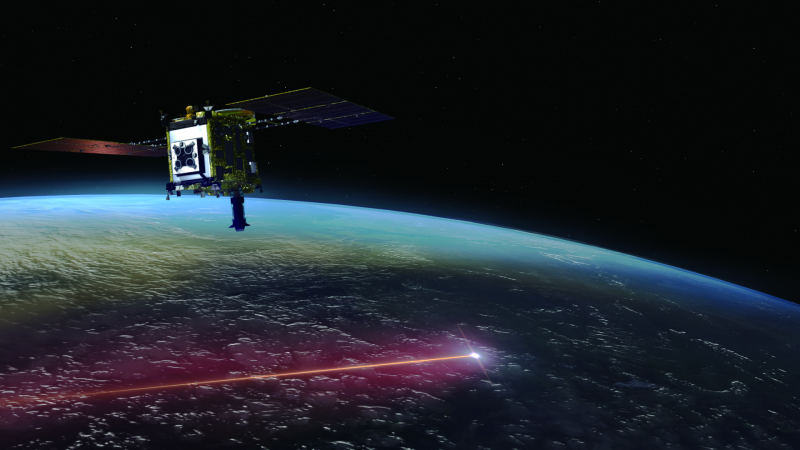
Artist’s concept of JAXA’s Hayabusa2 sweeping past Earth, as its sample-return capsule – carrying precious grains from the surface of asteroid Ryugu – plummets to Earth’s surface. Image via JAXA.
On February 22, 2019, the Hayabusa2 spacecraft of the Japan Aerospace Exploration Agency (JAXA) touched down briefly on near-Earth asteroid 162173 Ryugu and fired a bullet into the asteroid’s surface. The spacecraft collected a sample of dust puffed up during the maneuver, and now the spacecraft – carrying its precious cargo of an asteroid sample within a capsule on board – is headed back to Earth. The spacecraft will sweep past Earth, and the capsule will drop to Earth’s surface via parachute on December 6, 2020. JAXA said in an announcement on August 19, 2020, that it has now been officially informed that the capsule is approved for landing in Australia. JAXA said:
The Hayabusa2 re-entry capsule will return to Earth in South Australia on December 6, 2020 (Japan Time and Australian Time). The landing site will be the Woomera Prohibited Area. The issuance of the AROLSO [Authorization of Return of Overseas-Launched Space Object] gave a major step forward for the capsule recovery.
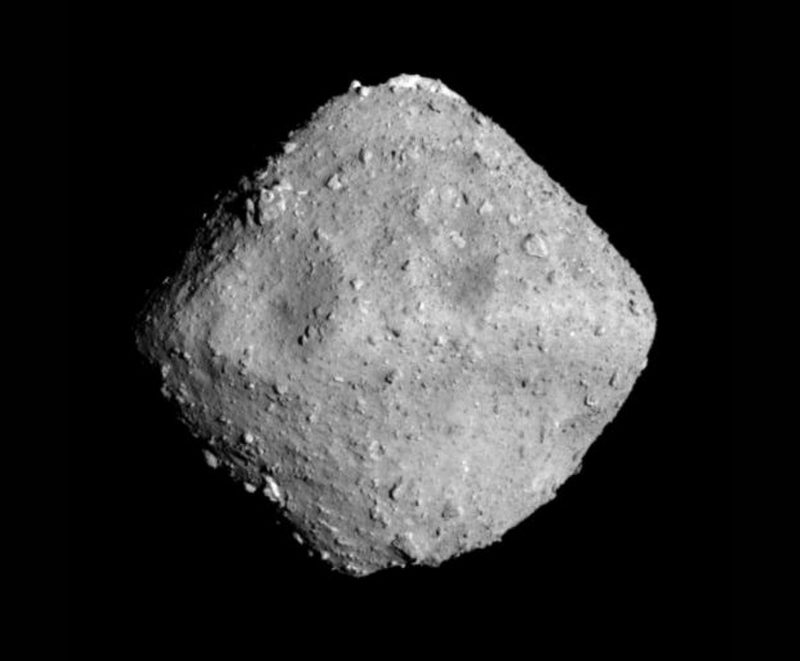
Ryugu as seen by Hayabusa2 on June 26, 2018. Image via JAXA/ University of Tokyo/ Kochi University/ Rikkyo University/ Nagoya University/ Chiba Institute of Technology/ Meiji University/ University of Aizu/ AIST.
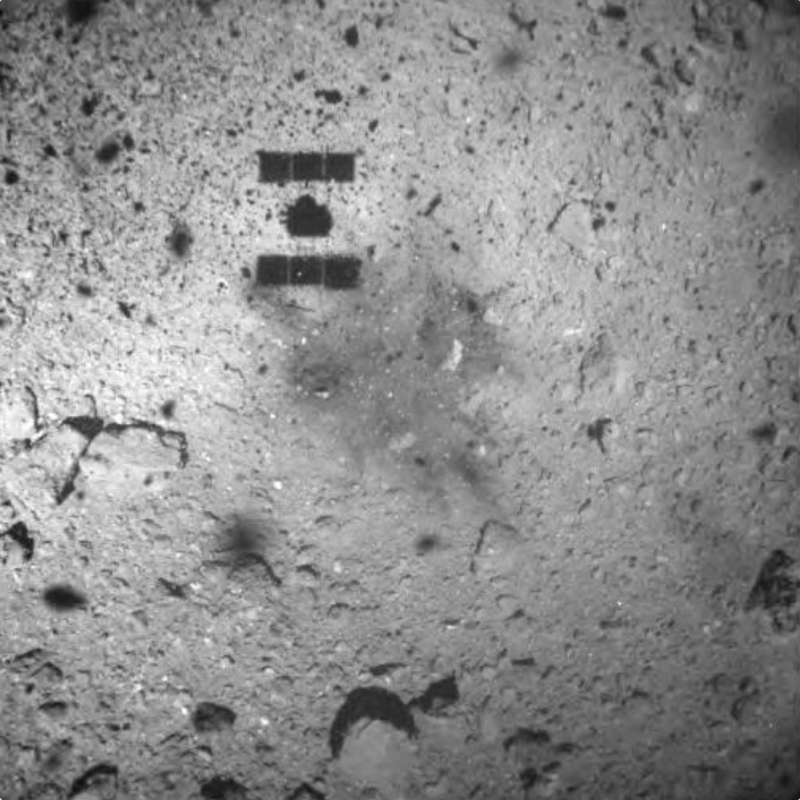
Japan’s Hayabusa2 spacecraft captured this image in February 2019, during its ascent after touchdown on asteroid Ryugu. You can see the shadow of Hayabusa2 and a region of the surface of the asteroid apparently discolored by the touchdown. Image via JAXA (@haya2e_jaxa on Twitter).
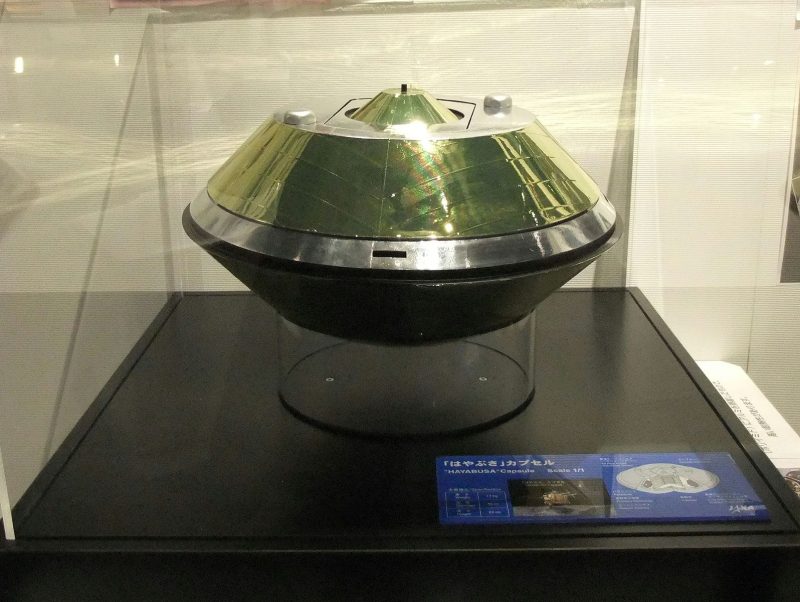
Replica of the Hayabusa2 sample-return capsule, which measures about 16 inches (40 cm) in diameter. The capsule is scheduled to land, via parachute, in Australia’s Woomera Prohibited Area on December 6, 2020. Image via Wikimedia Commons.
Hayabusa2 was launched from Earth on December 3, 2014. The spacecraft rendezvoused with asteroid Ryugu on June 27, 2018. The mission follows an earlier JAXA Hayabusa mission (the name means Peregrine falcon), which, in 2010, returned samples from asteroid 25143 Itokawa, the first-ever asteroid to be the target of a sample return mission and the only other mission so far to have returned asteroid samples to Earth.
Hayabusa2 surveyed Ryugu for a year and a half. It left the asteroid with the precious sample safe inside its capsule in November, 2019.
After Hayabusa2 flies past Earth to deliver its sample capsule in late 2020, it is expected to retain 30 kg (66 lb) of xenon propellant, which can be used to extend its service and to fly by new targets to explore. As of August 2020, there are two scenarios under consideration for a mission extension. First, a Venus flyby in 2024 would set up the spacecraft for a November 2029 encounter with a small, quickly spinning near-Earth asteroid called 2001 AV43. During the flyby, Hayabusa2 could also conduct infrared observations of Venus. Alternatively, the spacecraft could be sent toward a rendezvous with another near-Earth asteroid and another fast rotator – 1998 KY26 – in July 2031.
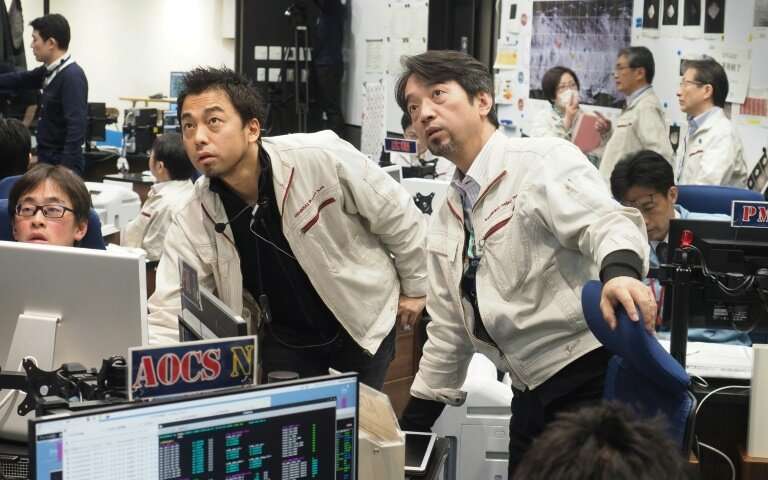
A live webcast showed Hayabusa2 scientists nervously monitoring Hayabusa2’s February 22, 2019 touchdown on distant asteroid Ryugu.
Bottom line: The Japan Aerospace Exploration Agency (JAXA) said this week that it has now been officially informed that its Hayabusa2 space capsule – carrying precious dust from the surface of near-Earth asteroid Ryugu – is approved for landing in Australia. If returned safely as planned on December 6, 2020, this asteroid dust will be only the second asteroid sample ever returned to Earth.
Read more from Nature: How space missions snatch pieces of other worlds and bring them back to Earth

"entry" - Google News
August 21, 2020 at 05:41PM
https://ift.tt/2EodVhn
Hayabusa2 re-entry capsule approved to land in Australia - EarthSky
"entry" - Google News
https://ift.tt/3f5ZAUJ
https://ift.tt/3d6LMHD
Bagikan Berita Ini















0 Response to "Hayabusa2 re-entry capsule approved to land in Australia - EarthSky"
Post a Comment